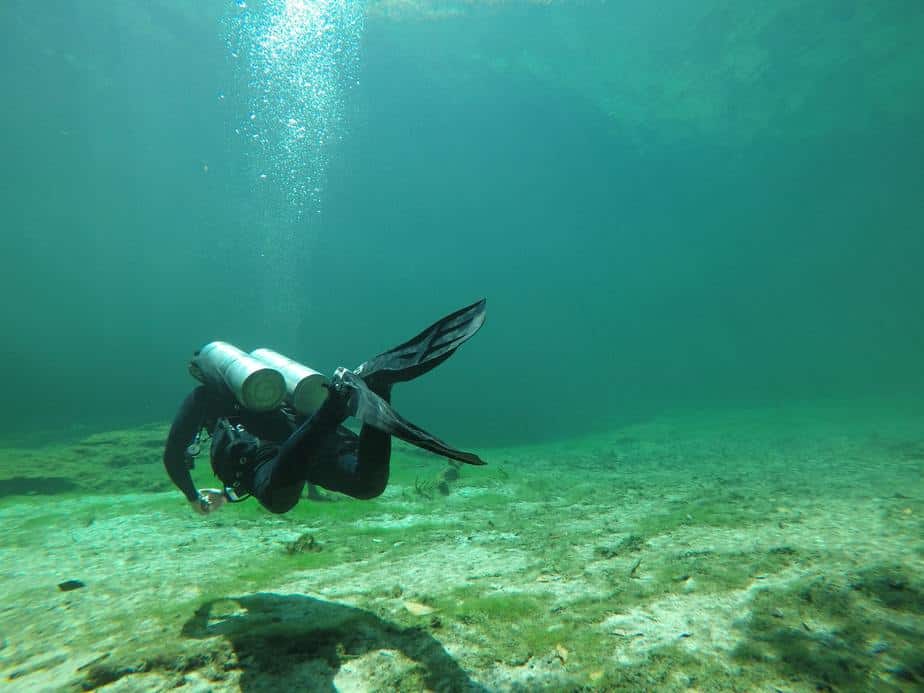Technical diving is a step up from recreational diving. A technical diver is qualified to dive deeper, breathe more than one gas, and dive longer underwater. A recreational diver usually breathes normal air, just like on the surface. A technical diver will also use air, but once they reach certain depths, they will switch to enriched air nitrox, pure oxygen, and even trimix to reduce the effects of nitrogen narcosis. As you can imagine, determining what gas mix to use and when sounds very… technical.
So let’s just get this out of the way. Technical diving is not for everyone, and that’s okay. Everyone can be a hiker, but few can legitimately scale Mt. Everest without relying on a path the Sherpa people made for tourists. In a similar vein, technical diving lets you see a wreck that rests 30 m (100 ft) underwater, but it also exposes you to new dangers and risks. One must have great skill and a certain disposition to become a technical diver.
In this article, we’ll discuss what technical diving is and what it takes to be a technical diver. If you are a recreational diver looking to make the jump to a tec diver, then read this article and see if it’s something you’d be interested in.
Is it worth being a technical diver?
Why should a recreational diver bother to learn technical diving? For starters, if you are frustrated with how limiting your current certifications are, then getting a higher certification with fewer limits is a no-brainer.
The skills you’ll learn in the technical diving courses let you stay underwater for longer, reach depths you weren’t certified to dive to before, and get an experience that only fellow tec divers are able to enjoy. It’s true that you can explore many coral reefs as a rec diver, but there are many things you’re missing out on.
When recreational diving, you are trying to stay within your no-decompression limits. Breathing only air, it doesn’t take very long at depths beyond 20m for you to exceed your NDL. As such, rec divers can only experience a wreck for a few minutes before their time runs out. Technical divers don’t have this limitation; they can stay longer and see more. This is the primary reason why people learn technical diving; they can just lift the restrictions that rec divers are confined to.
With that said, technical diving has its downsides. For starters, now you have an even greater responsibility for you and your partner’s safety. Also, there is a literal cost: the gear required for tec diving and the cost of nitrox and trimix really adds up quickly. You will have to spend thousands of dollars upfront for the courses and equipment, and tens of thousands over the years paying for gas refills. This may or may not be worth it to you depending on how much you enjoy tec diving.
In order to get started with tec diving, you must take the appropriate courses, of which there are several. This is very important, because each course will teach you new aspects of tec diving, such as how to use the new equipment, different procedures, and new skills. This will be a major step up from recreational diving.
If you’re thinking “forget that, I’ll just stick with my current certification” and sneakily exceed your limits on your next dive because you think there’s not much difference between rec and tec diving, then what you are doing is foolishness and can easily result in death.
With that spiel out of the way, if you’ve decided you want to become a technical diver then you must take the appropriate courses. In the next section, we’ll give you an idea of the kinds of things you’ll learn.
Taking the first step
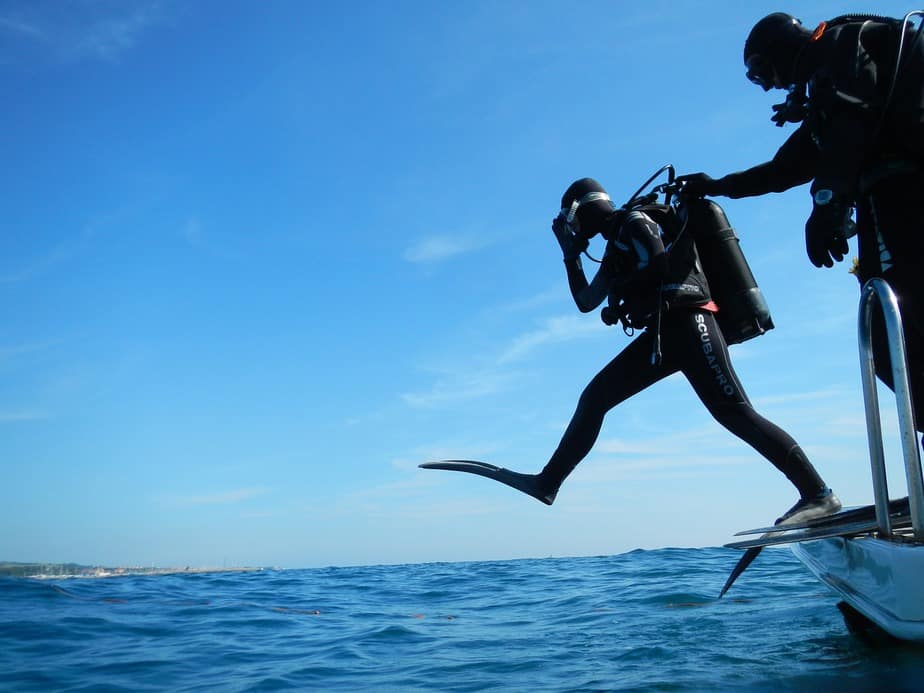
There are many training agencies that offer technical diver training, however we are going to focus on PADI’s program because it’s what we know and it’s widely available. The TEC 40 will be the starting point tec diving hopefuls. Here, you will learn the basics of this new type of diving.
The goal of the course is to teach you:
- How to plan a technical dive.
- How think like a technical diver.
- How to use decompression planning programs on your dive computer.
- How to use a gas cylinder with oxygen content up to 50%.
To be eligible to enroll in the PADI TEC 40 course, you must meet these requirements:
- Completed PADI Advanced Open Water Diver or equivalent.
- Completed PADI Enriched Air Diver or equivalent.
- Completed PADI Deep Diver or have proof of at least 10 dives to 30 m (100 ft).
- A medical form signed by a doctor within the last 12 months.
- At least 18 years of age.
- Minimum of 30 logged dives.
Unlike the requirements to be an Advanced Open Water Diver, the requirements to be a tec diver are quite steep. However, once certified, you get the following benefits:
- Dive to depths up to 40 m (130 ft) with decompression not longer than 10 minutes.
- Use of a stage tank with up to 50% oxygen.
Congratulations, your maximum depth limit is increased, and now you can change up the gas mix. It doesn’t seem like much, but that’s only the first course of many. You are now a tec diver, but you still have a long way to go. The limits placed on you are slowly starting to be lifted. Now you can explore more and discover new places. Just by being a tec diver, you get to be in places most people never get the chance to. It’s exciting.
Technical diving equipment
Technical diving requires a different setup than recreational diving. You’ll learn about it in-depth by taking the course, but to summarize it briefly here, you’ll be diving with multiple gas tanks. You need two main breathing gas tanks and a decompression tank.
Many technical divers follow the backmount configuration, where two tanks are strapped on their backs and a third tank is strapped to the side – the “stage.”
Another option is to go with a sidemount configuration where all of the tanks are strapped to the side and distributed evenly. This system was inspired by cave divers, and has become more popular over the years, seeing usage even for recreational diving.
In case you’re wondering if you need to have a full set of your own gear, the answer is no, you can rent it all from the dive center you booked with. However, if you plan on diving frequently, then you should have your own set and take care of it personally. That way, you can become highly familiarized with your gear and how to use it to its full potential.
What’s next?
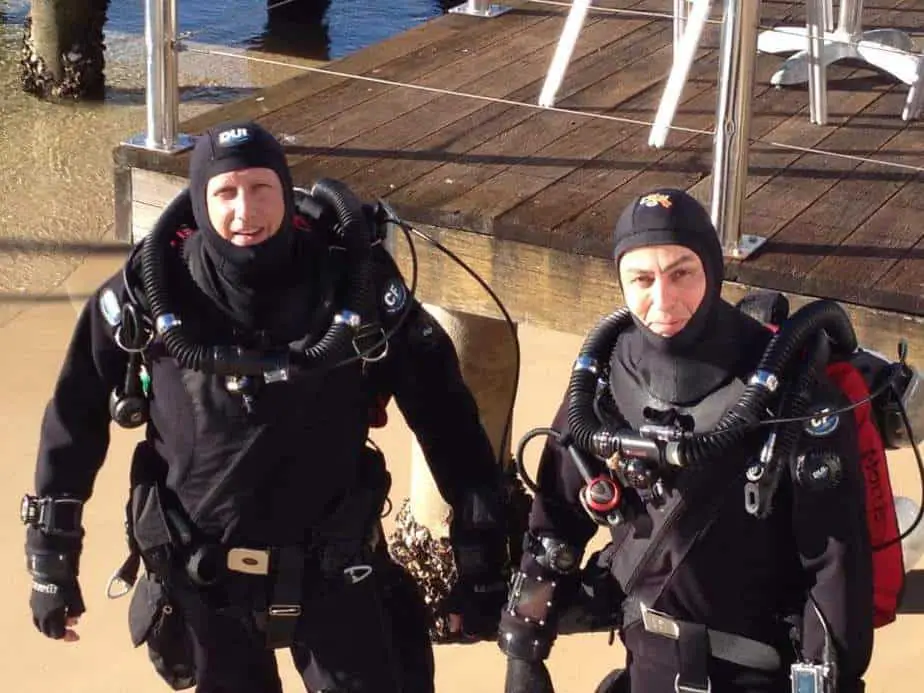
After the PADI TEC 40 course, you will be eligible to take the PADI TEC 45, then PADI TEC 50. After you complete the “50” course, you can take courses where you’ll learn about diving with trimix. These courses are the PADI TEC TRIMIX 65 and PADI TEC TRIMIX Diver. Once you finish the final course, you’ll be qualified to dive below 90m (300 ft)!
We recommend taking your time with each course. It’s not enough just to have the certification; you need to truly be skilled. After each course, you should apply what you learned and gain experience. Don’t rush to take the next class. Make at least a dozen dives between courses so you can consolidate what you learned. It will be better for your education because you’re not just memorizing but understanding and applying.
If you don’t have a partner that shares the same enthusiasm as you for technical diving, then you can ask your diving center if they plan trips for technical divers. You will be able to dive with other scuba enthusiasts who are very skilled with lots to learn from as part of your education and diving experience.
Prerequisite skills for a tec diving course
Before you take a tec diving course, you should be a competent diver. This is not just a course outcome; it’s a prerequisite. After taking your first tec diving course, your skill level will have improved, but this improvement will be from an already high-level. Don’t expect to go in as a mediocre diver and come out miraculously transformed. You should be comfortable with the “fundamentals” of diving to excel.
Buoyancy and trim
The most fundamental skill of diving is managing your buoyancy and trim. No matter what point you’re at in a given dive, you should be able to maintain a near-horizontal position in the water column. You should also be able to float comfortably while keeping a distance of a metre above the ground.
Similarly, your ascents and descents must be done slowly in a controlled manner. It must also be precise. If you planned for a dive at 25m, you shouldn’t find yourself at 26m. The same is true for ascents.
On top of all of this, you must be capable of adjusting your position solely with your fins without the assistance of your hands. We say this not in an insulting way, but the fundamentals skills should be second-nature by now. When you’re in the tec diving course, you don’t want the added mental load and stress of trying to remember the basics when you should be learning new things.
Equipment usage
The next fundamental skill you should have is a mastery over your current diving equipment. Are you able to don all of your gear and use them with your eyes closed (you don’t really need to do that)? Do you feel comfortable using your BCD as you do driving your car? Is the compass pointing you in the right direction? Can you deploy the SMB as soon as you need to?
When you’re on a tec diving course, you will be introduced to even more equipment. The assumption is you already know how to use your pre-course equipment with relative ease. Some gear is prioritized above others, such as your BCD and mastery over your buoyancy and trim.
Even with gear that you might not use often, such as the SMB, you should be competent enough to at least shoot it without entangling yourself in it. You never know when you might need to use it in an emergency situation. You’ll be introduced to new scuba configurations such as a twinset and long-hose setup. If you are familiar with your old gear, then learning a new configuration should feel like a natural progression.
Rescue skills
Another fundamental skill you should be competent at are your rescue skills. There’s no shortage of dangers and risks when you’re 100 feet underwater. Hazards are everywhere. You could literally make no mistakes but somehow a gear starts to malfunction. Without a backup, you’d be in serious trouble. Technical diving takes these risks and multiplies it by ten.
That’s not to say that technical diving is akin to suicide; no, far from it. With the proper training, preparation, and skill, you can minimize the risks to an acceptable level. However, if we’re being very honest, diving is objectively a high risk activity compared to many others. The environment is hostile; no human should be able to dive this deep underwater.
Due to the depth, the water pressure can cause various barotraumas. There’s also the risk of a dangerous encounter with marine life, getting lost or getting trapped, and much more. Since you plan on taking a technical diving course, one of the prerequisites is that you take a Rescue Diver course.
The skills you learn in the Rescue Diver course is essential so you know what to do in the event of an emergency. You and your dive buddies should be capable of performing all of the essentials of rescue both in and out of the water.
You should be able to tow another diver to safety, perform in-water equipment removals, rescue breathing, dealing with a panicked diver, ascending with an unconscious diver, dealing with out of gas situations or equipment failures, and on land CPR. If just reading the things you need to deal with is giving you anxiety, then you should either take the course or consider that tec diving might not be for you.
A tec diving course will teach you mostly about tec diving. These fundamental skills such as buoyancy control and rescue skills are skills you should know before you even enroll. If you have to play catch-up on old skills while learning new ones, you may not be able to retain this information which puts you at a disadvantage.
Despite saying all that, there are still levels to the tec diving courses. The first stage will be a challenge designed to push you out of your comfort zone. However,the instructors do not expect you to be perfect. You will experience physical exhaustion and some mental stress in the beginning, but at the end you will be rewarded with an overwhelming feeling of achievement and a new certification.
The most important prerequisite for technical diving
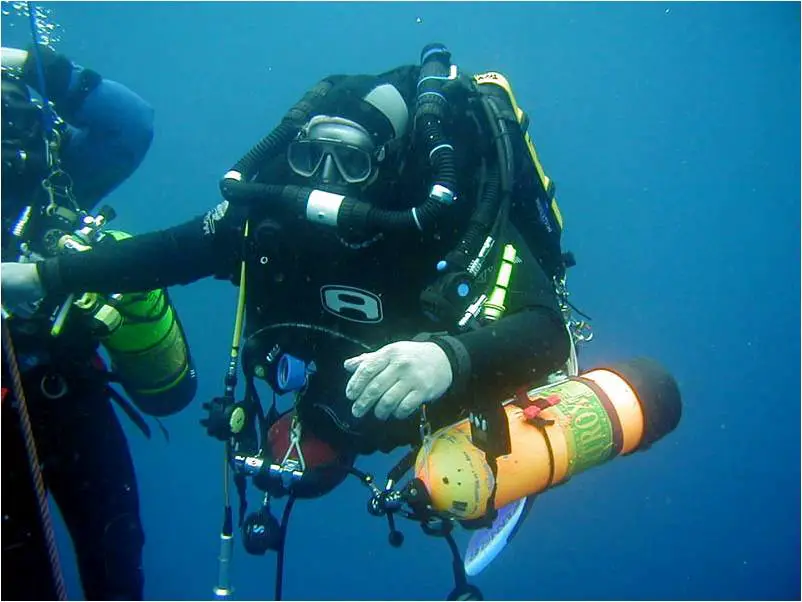
All entry-level technical diving courses have enrollment prerequisites that ask for X amount of logged dives, Y amount of dives breathing enriched air or dives past a certain depth, and an Advanced Open Water certification. This is all well and good; meeting these prerequisites means you have gone through a base level of training and have decent diving experience.
However, perhaps more important than diving skill and knowledge is being humble and knowing your limits. Your training and skills amount to nothing without the right mindset. A very common cause of death for technical divers are mistakes or errors in judgment that were made because of complacency and ego.
That’s right, the risk of death actually increases with more experience. How? The more successful dives one logs, especially to great depths with few to no incidents, the more their ego inflates. After dozens or over hundred successful but uneventful dives, the diver can only conclude that their skill level is beyond comprehension and they are infallible.
With such an inflated ego, they start to let their guard down. They begin to lose their fear of the ocean and start taking greater risks that can lead to disaster should something go wrong. What we just described is also very common in the recreational diving community, however the risk is not as severe since they are diving in shallower waters.
Technical diving isn’t like other sports where a mistake costs them a game or leads to a minor injury. Given how unforgiving technical diving is, all it takes is one mistake at a deep enough depth and it may be a diver’s last. If you cannot overcome the obstacle you are presented with, you will likely die.
As such, killing your ego and never allowing yourself to be complacent is a must. Stay humble and acknowledge that you have limits. It doesn’t matter how many logged dives you have or if you have a pile of diving certifications. The ocean doesn’t care about any of that, and even the most seasoned veteran can lose their life if they let their guard down. It’s best to have a healthy fear of what could go wrong so you will stay vigilant.
Technical dive safely by keeping your ego in check
So, how do you eliminate your ego, or at the very least keep it in check? Both the easiest and most difficult way is to find yourself in a situation where you realize just how fallible you are, and somehow survive with a newfound fear and respect of the ocean. Oftentimes, reality is the greatest teacher. However, life-threatening situations are not something you want to seek out, because there is a chance that you won’t make it out of it.
With that said, there’s a reason why we stick close to our dive buddy and bring backups of all the vital pieces of gear. Perhaps all that needs to happen for you to experience the fear of a potentially life-threatening situation is a gear malfunction that forces you to switch to a backup and head for the surface post-haste.
Other than being subjected to an experience like that, the safest way to quickly eliminate your ego is to change your attitude. Just think. There are probably divers that are more skilled and with more experience than you who have lost their lives while diving. If you truly think you are exceptional, it’s great to remind yourself that you’re probably not, but that doesn’t mean you’re a bad diver.
Being brutally honest and having humility is actually a sign that you’re a good diver. Self-criticism and a degree of perfectionism are good qualities that a technical diver should have. Not only are you self critical, but are you open to criticism from others? Having a veteran diver explain to you your mistakes should be seen as a boon. Do not think that you are past the point of receiving advice.
Furthermore, do you know the limits of your abilities? Is your buoyancy and trim really as good as you claim? Can you navigate your way out of any environment? Do you stay composed and handle real-life emergencies stoically, or do you panic and make rookie mistakes? Were you able to maintain control of the situation, or at least had a full grasp of the seriousness of the event? Or did you tunnel vision?
Similarly, how strictly do you follow standard diving procedures? How often are you checking on your dive buddy? Do you find pre-dive briefings to be a waste of time and not really pay attention to them? Asking yourself these introspective questions is a valuable skill to have because it forces you to be honest with yourself and your weaknesses.
Diving is not a competitive sport; it’s not a race and there’s no prize for who dives the deepest or longest. The old adage of pushing past your limits to improve yourself is not totally applicable to scuba diving. The only outcome is a potential inflation of your ego if you succeed, or a possible death if something goes wrong.
Dealing with human factors
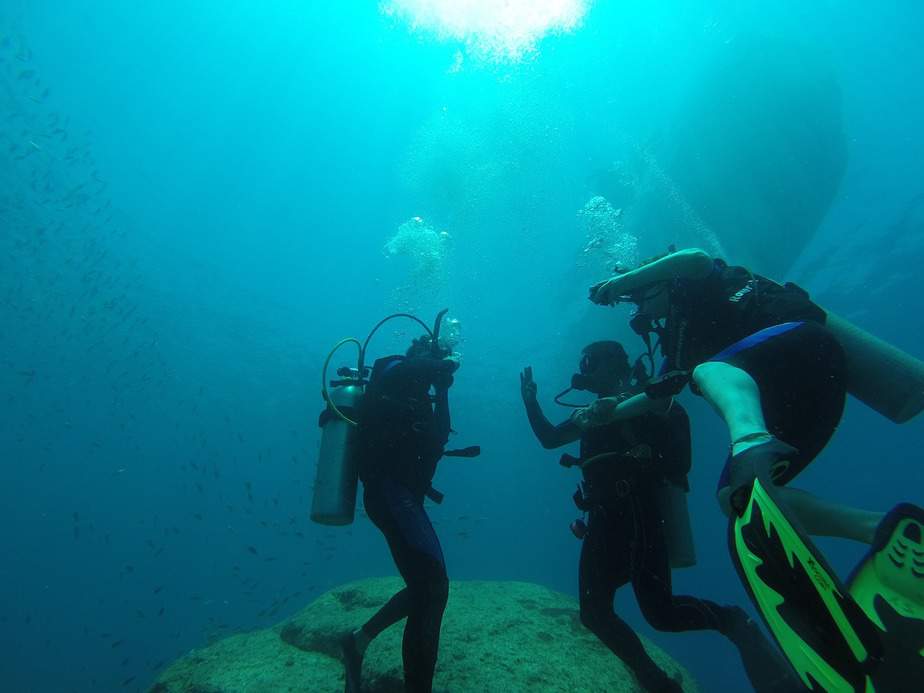
In this section, we will briefly mention the importance of being sensitive to human factors – that is, being aware of the state of the entire dive group. This is not necessarily a scuba diving exclusive issue, but a general human one. However, since your dive buddies are crucial to your survival and vice versa, it’s something worth talking about.
You need to be able to gauge the mood of the group because it directly contributes to team cohesion. Read your fellow divers’ body language; does someone seem uncomfortable or on edge? Know when to “call” a dive if you feel like something is wrong which could cause a chain of events that leads to a significant problem further down the line.
If you feel like this is some hippie kumbaya advice, well, whether you like it or not, human factors are starting to become part of diving and it’s worth looking into it to educate yourself on the subject. We recommend reading Gareth Lock’s Under Pressure: Diving Deeper with Human Factors to learn more about it and how it applies to diving in general, not just technical diving.
Frequently Asked Questions
What is a good benchmark for when I am ready for technical diving?
The amount of logged dives one has is often used like a ranking system in diving circles. Whoever has the biggest number is the “best” diver because they have the most wisdom and experience, or something like that. This way of thinking is flawed and not a good measurement of a diver’s skill.
So you may be unsure if you’ve done “enough” dives, and you might be thinking that by doing a greater volume of dives, you will eventually be ready. Not necessarily. A diver could do 500 dives, all of them uneventful, and their experience level would not be much higher than a diver who only has 50 logged dives. Conversely, a diver with 100 logged dives, all of them in a variety of dive locations with novel experiences each time, could be a much diver overall.
The point is the number of dives is not necessarily a good indicator of skill, and just because someone has a huge number of dives doesn’t mean they are superior to you or vice versa (remember what we said about ego).
Before you take a technical diving, ideally you have already dealt with such harrowing experiences as: heavy currents, an incompetent dive buddy, low visibility, a panicked diver, basically any tough situation that forces you to become a better diver.
That’s not to say that you should seek out trouble just so you can see how you handle a tough situation. However, as long as you have a strong grasp on the fundamentals of diving and have at least the minimum number of dives required, then you may be ready for the entry level technical diving course.
How expensive is it to be a technical diver?
Unfortunately, not only is technical diving riskier, it’s also more expensive. The tec diving courses and the required dives cost money. Then there’s the new equipment you’ll have to buy. Then the next round of courses and dives, and even more equipment on top of that. After the initial investment in gear and course material, there is the recurring cost of refilling gas.
Unlike rec diving where you only use air, filling your scuba cylinders with helium, oxygen, and nitrox adds up. For the entry level technical diving courses, the cost of gas is still manageable. Once you start using helium, then your wallet will start hurting.
Diving is not a cheap sport, and you should not take risks just to save money such as not getting the necessary gas mixes for the depth you will be diving at. The greatest technical diving expense will occur at the highest level of technical diving when you have to pay for thousands of litres of trimix over many years.
How dangerous is technical diving?
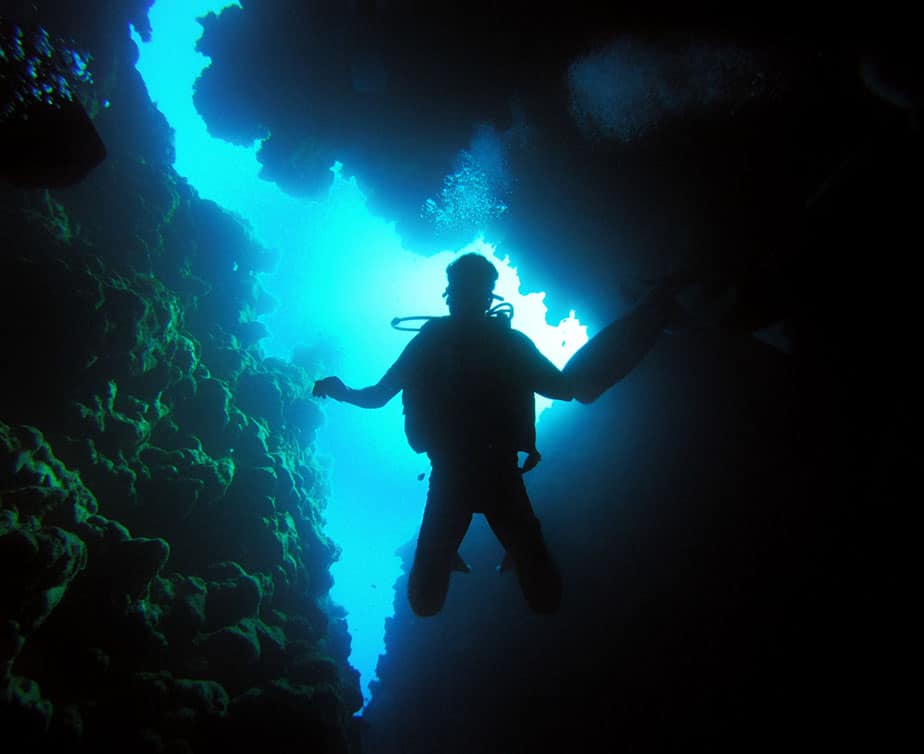
The reason why technical diving is so dangerous is that you will be at greater risk of: decompression sickness, hypoxia, oxygen toxicity (pulmonary and central nervous system), hypercapnia, hyperbaric arthralgia, drowning, and high pressure nervous syndrome – many of these can be fatal.
Technically speaking, the risk of encountering any of these is very low. By following the safety procedures taught in the courses, even technical diving can become safe enough to be taught to the general public. With that said, it’s more dangerous than recreational diving.
The two main reasons are: high partial pressure of oxygen and ascent ceilings. The risks posed by these two factors, though minimal, are worth taking into account before you enroll in a technical diving course. Furthermore, the deeper one dives, the less reliable decompression calculations and physiology becomes. No two people are the same, and your body may react differently at depth compared to someone else.
How difficult is dive theory and diving physics?
If academics are not your strong suit, you may be worried that any new theories taught may be too tough to wrap your head around. However, if you’ve already passed your Advanced Open Water Diver course, then any new theory you’ll learn should be within your reach.
Similarly, any mathematics or equations involved should be along the same level as what you learned, just slightly different. They start to make a lot more sense once you just think about it logically.
Furthermore, it’s not like a technical diver is literally doing complex mathematics in their head while diving. These things will become second nature after a while, and you only need to know the concepts at a high enough level to receive their benefits. Plus, your dive computer can also help you with most of these calculations. Just have a fundamental understanding of the basics so that if your dive computer gives you an absurd number, you’ll spot it immediately.
Parting words
Diving is a fantastic sport that provides breathtaking and unforgettable experiences. Even at shallow depths, the aquatic world is enough to awe you with its beautiful corals and inhabitants, as snorkelers can attest to. However, depths of the ocean are just another frontier in which adventurers can explore and conquer. Some very famous wrecks are only accessible to technical divers who can dive to depths of 100 ft or more.
Without the proper training and equipment, diving that deep would be suicide. By taking the technical diving courses, you can learn how to safely search and explore the unknown. It opens doors that are locked to other divers who only have their basic Open Water certification. There’s nothing wrong with rec diving, however if you’re someone who dares to see more, then you need to get started with technical diving.

